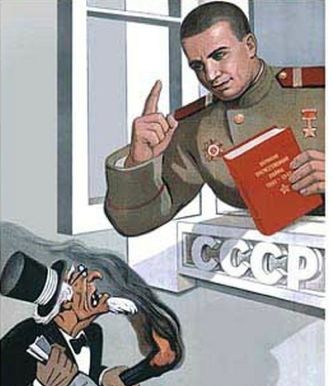peashooter85:Why Switzerland, Austria, Sweden, and Finland were once Third World CountriesA common w
peashooter85:Why Switzerland, Austria, Sweden, and Finland were once Third World CountriesA common way in which economists, politicians, and political scientists tend to divide the world is by “First World” and “Third World”. The meanings of such terms are pretty clear today, First World nations are heavily developed industrial or information based economies which are very wealthy or prosperous. Third world nations are countries that are impoverished, underdeveloped, and have very simple economies. However, many people would founder when asked what countries belong to the “Second World”. The reason is, the division of the world into First World, Second World, and Third World countries originally had nothing to do with economics, wealth, and prosperity, but instead was a division between ideologies and Cold War politics.When World War II ended in 1945 two major superpowers would take the lead in world affairs; the United States and Soviet Union. Of course, the two countries didn’t see eye to eye, the US being a democratic capitalist system and the USSR being a communist system. It wasn’t long before a deep rivalry between the powers occurred, which would become known as the Cold War. During the Cold War, both sides struggled to maintain technological, military, political, and economic superiority. Space races and arms races were run, wars and proxy wars were fought, and both sides divided the world up into spheres of influence in an attempt to stay ahead of the others. By the 1950’s two major collective defense organizations dominated Cold War politics. NATO (North Atlantic Treaty Organization) consisted of most North American and Western European countries which were opposed to the USSR. In response, the Soviet Union created the Warsaw Pact, which consisted of the USSR and its satellite states in Eastern Europe.Thus the world was essentially divided between democracy and communism. Those nations that belonged to NATO, supported NATO, or were under NATO’s sphere of influence were termed “The First World”. They tended to be democratic capitalist nations and included countries in North America and Western Europe, some countries in Africa and the Middle East, and then finally Japan, South Korea, and the Philippines. The “Second World” consisted of communist countries such as the USSR, the Soviet satellites in Eastern Europe, China, Vietnam, North Korea, Cuba, and any other associated nations. Finally, there was the rest of the world, everyone else who neutral or wasn’t aligned with either NATO or the Communist Bloc. The Third World tended to consist of less developed and impoverished countries (at least at the time) in Africa and Latin America, but also included modern industrialized European nations such as Switzerland, Austria, Sweden, and Finland.In 1989 communism fell in Eastern Europe and the Berlin Wall came down. In 1991 the Soviet Union fell apart. Thus the Cold War came to an end, but classifying nations into “First World” and “Third World”. However, since the end of the Cold War the system started to change meaning to describe nations in terms of wealth and development. This made sense since “First World” nations tended to be wealthy and developed while “Third World” nations tend to be poor and underdeveloped. Of course today the “Second World” no longer has any substantive meaning, thus people tend to think the Second World is somewhere in between the First and the Third. Since the 1970’s, the term “Fourth World” has also come about, describing either indigenous populations within a country (Native Americans or Aborigines for example) or minority ethnicities within a First World country that have Third World living standards. -- source link
Tumblr Blog : peashooter85.tumblr.com


